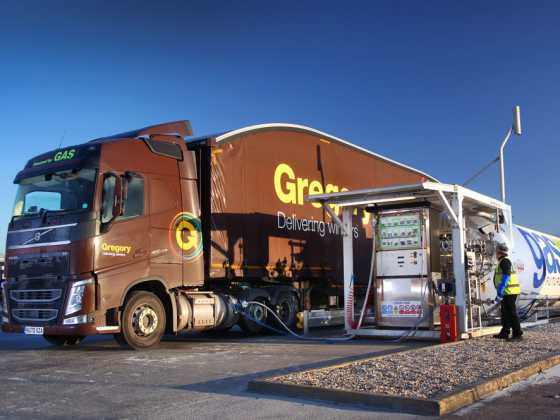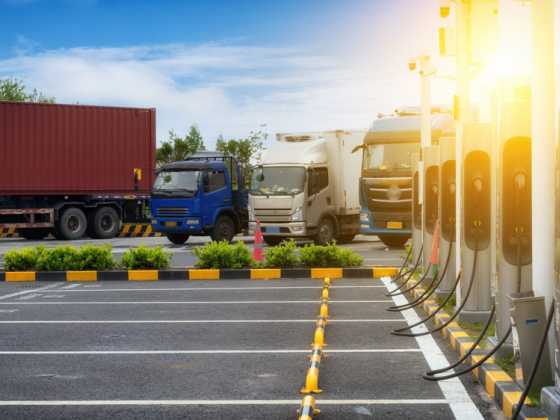Expert Panel: Reaching zero emissions

Fleet operators are key to driving rapid adoption of EVs necessary to reach the target of all new car sales being “effectively” zero emission by 2040. But what support and incentives do businesses need to make the switch? Our panel of experts discuss
The government has an ambitious target for all new car sales to be “effectively” zero emission by 2040. To achieve this, fleet operators are key, says a new report from Catapult. They will create the demand for the charging infrastructure, while data can be used to help drive the private vehicle market. Crucially, by switching big fleets of vehicles to electric, they will have a significant impact on reducing air pollution and greenhouse gas emissions. But to make the switch to electric, fleets should be given the tools, information and incentives they need, the Catapult report says.
“Fleet operators represent a huge amount of vehicles on UK roads and miles driven, so are critical to the success of the adoption,” said Danny Winn from Schneider Electric. “In our view, businesses need more incentives from government to make the switch. Better grants to businesses that switch from ICE to EV will help, but businesses also need more education on the power/infrastructure dilemma and how they can make the switch in the most cost effective way. Utilising proven energy management experts, businesses can take a holistic approach to their EV strategy and achieve significant cost avoidance, which helps the business case for change.”
Information is important, agrees Duncan Chumley from Daimler Fleet Management, but the issue is that it is often incomplete. He said: “All too often new information is released about new launches or technological advancements that can fall short of answering the basic specification and usage information that drivers will naturally need to know.
“Providing tools, information and incentives will require strong collaboration between fleet operators, manufacturers, charge providers and the government. Support for fleet operators that shows a complete end to end view of a realistic EV usage strategy coupled with a clear and concise forward planning commitment by government bodies will in turn increase knowledge, confidence and adoption.”
According to The AA’s Operational Fleet Report 2018/19 in conjunction with Fleet Solutions, a third (35 per cent) of fleet managers expect to be using electric vehicles in the next five years while bio-diesel, LPG, CNG and hydrogen are all expected to show slight increases from today’s figures. However, there are still barriers to overcome in convincing organisations to make the switch, believes Stuart Thomas from the AA.
He says: “Charging infrastructure is essential to managing concerns around range, and we need to ensure employers are provided with the incentives to invest in workplace charging to respond to the estimated 40 per cent of future EV owners who will be unable to install domestic charge points. We also welcome the government’s announcement that all new rapid chargers from 2020 will have to take contactless credit/debit cards, as currently drivers need a wide range of apps and cards to make use of charging points.
“However, infrastructure alone is not enough. We need a range of measures to encourage the uptake of zero emission vehicles, from zero rate company car tax through to a ready supply of vehicles which are fit-for-purpose. Manufacturers need to produce popular ULEVs in a timely fashion and businesses need to have access to detailed consultancy and advice from independent advisors to help them make informed decisions about the set-up that is right for them.”
User-friendly charging
There has been a lot of talk from government about making the EV infrastructure more ‘user friendly’. Currently multiple payment methods are a source of frustration for drivers. The government has therefore made it clear it expects industry to develop a roaming solution across the charging network, allowing electric vehicle drivers to use any public chargepoint through a single payment method without needing multiple apps or memberships.
But what else could be done to make the public charging infrastructure less problematic?
Danny Winn from Schneider Electric believes that the lack of a clear interoperability framework in the UK is not only effecting the experience of charge point users, but also businesses and the industry itself. He says: “The government, lead by OLEV, needs to have a clear specification of what smart and interoperable means and implement legislation that demands standards are met. Only when this is achieved will we see a step change in user experience and clarity for businesses.”
Stuart Thomas believes that the UK has the opportunity to lead the way on electric and low emission vehicles, but the right environment for technology must be created to thrive and flourish. Stuart says: “New business models in which infrastructure can be leased to make it more cost-effective for workplaces is one way of developing the network, but we also need to ensure there is consistency in the technology being rolled out, so businesses are not having to decide between VHS and Betamax.
“Long-term thinking is required to respond to individual business demands, with an integrated mix of static, dynamic and mobile charging infrastructure and the ability to deploy more capacity in times of weather extremes.
“For many businesses, downtime is an area of key concern and so discussion of Wireless Power Transfer and other more flexible charging technologies will be key to allowing organisations to plan their workflow, optimise routes and keep vehicles on the road, particularly when double-shifting.”
Charge times
The amount of chargepoints is not the main problem for Duncan Chumley, who points out that there are thousands. Rather it is the time spent charging, which makes it difficult to plan. He says: “Charge times can vary dependant on both the size and type of battery in your vehicle and also due the specific type of charger available (be that rapid, fast or otherwise), this leads to uncertainty and makes planning difficult.Additionally the key locations for charging, ie motorways, still seem to feature the poorest and worst maintained charge points.
“A small mind-set change could prove the simplest solution. If you are forced to charge your car mid journey is it necessary to fully charge your vehicle? With an EV it makes sense to charge overnight or when the vehicle is idle, not mid-journey as you would with a combustion vehicle. If caught out when on the road, drivers need to consider how many more miles do I need, rather than applying a ‘fill her up’ old school mentality.
“With investment in on street charging such as the possibility of incorporating chargers into lamp posts and parking metres or the install of more free standing street chargers, there will be less reliance on the high ways infrastructure because (excepting longer journeys) mid journey charges will become obsolete.”
Other zero emission options
Hydrogen has many advantages as a fuel; it has zero tailpipe emissions, it’s suitable for heavy-duty applications, and has the longest range and fastest refuelling of zero-emission vehicles. But there are obvious barriers, mainly the limited amount of refuelling stations and vehicles.
That said, The Hydrogen Mobility Europe (H2ME) initiative is creating the world’s largest network of hydrogen refuelling stations. The project has met a key milestone, with hydrogen-powered vehicles travelling over eight million kilometres to date.
The project has now deployed close to 500 hydrogen-powered fuel cell electric vehicles and 30 hydrogen refuelling stations (HRS) across Germany, France, Scandinavia, the United Kingdom and other European countries.
Duncan Chumley said: “Theoretically hydrogen would be a far more acceptable and greener solution but only if production of it can be made simpler, safer and more cost effective. Hydrogen is only going to rival electric as an alternative fuel choice if it can be demonstrated that on a Whole Life Cost (WLC) basis that it can match electric on a ppm basis. If mainstream OEMs all commit to the development of hydrogen vehicles then we could see an interesting addition to the alternative fuel market, but with most OEM funding for R&D currently being aimed at the EV market, hydrogen may not be an affordable option in the near future.”
For Danny Winn, hydrogen could be a good solution for greening larger commercial vehicles. He said: “Heavy goods vehicles make up 20 per cent of all road emissions globally, despite only being two per cent of vehicles on the road. If we are to achieve zero emission transport, HGVs need to be tackled as a priority.
“Due to the weight of batteries there is clearly a role hydrogen can play in switching from fossil fuels, especially where you have long journeys, though more investment in needed in specific case studies to understand the economics better.”
When assessing any alternative fuel, it is important for businesses to select the right powertrain for their specific needs, believes Stuart Thomas. And that means hydrogen, CNG, LPG, cleaner Euro 6 diesel and electric variants should all be on the table. He says: “Organisations need to make informed decisions based on intelligent data which outlines vehicle usage, driver patterns of behaviour and future fleet policy.
“For some businesses, the move to electric, hydrogen or otherwise just doesn’t make sense until a much wider range of vehicles becomes available. Euro 6 diesel is still the best solution for many of those covering high mileage on the motorway network, while urban areas may require a different approach to meet air quality demands.
“Looking at hydrogen specifically, we took on board a mini hydrogen dispenser from Fuel Cell Systems for trial in our Fuel Assist Van last year. This allows us to provide an emergency top-up of fuel for stranded hydrogen vehicles in much the same way as we can get a petrol or diesel vehicle back on the road, and in line with our emergency fast-charge electric options. We also worked with Hyundai earlier this year on a 1,000-mile hydrogen vehicle trial with the Telegraph and we’re developing our experience in this area.”
Other ways to be zero emission
The quest to become zero emission may not be entirely plausible for some businesses but striving for a reduction in CO2 will still have significant benefits to the environment and should be applauded. So what other ways can companies reduce emissions from their business travel?
Huge gains can be made by businesses challenging established policies around transport, believes Danny Winn: “I see an opportunity for business travel specialists to flourish; they could analyse the travel behaviours for large employers and offer transport packages of blended on demand transportation fit for each journey. If these models could optimise costs and environmental benefits by blending a range of transport options from scooters in cities, zero emission vehicles on a short term basis, right up to trains and flights, there could be some huge gains made.”
Duncan Chumley says that while the reality for many businesses becoming zero-emissions (as a whole) is something of a pipe-dream, there is a plethora of opportunities for companies to reduce their carbon footprint. “From encouraging home working, car pooling and promoting cycle to work schemes through to reducing the amount of single use plastic, there is no shortage of marginal gains available, the sum of their parts making a limited but positive impact.”
Duncan continues: “Processes and procedures can also be sources for improvement. Introducing paperless billing and moving to digital processes such as eSignatures and click to sign are all positive steps. However there is no doubt when it comes to travel that there are clearly improvements to be made. Aside from the often discussed EV subject there are other niche areas of fleet that can be explored. Controlling grey fleet miles would certainly help as older driver-owned vehicles are often not the most economical or environmentally friendly. Also a review of pool car policies and LEV car share schemes will help with controlling journeys made in older vehicles that do not necessarily fall under the remit of the fleet operator.” L






